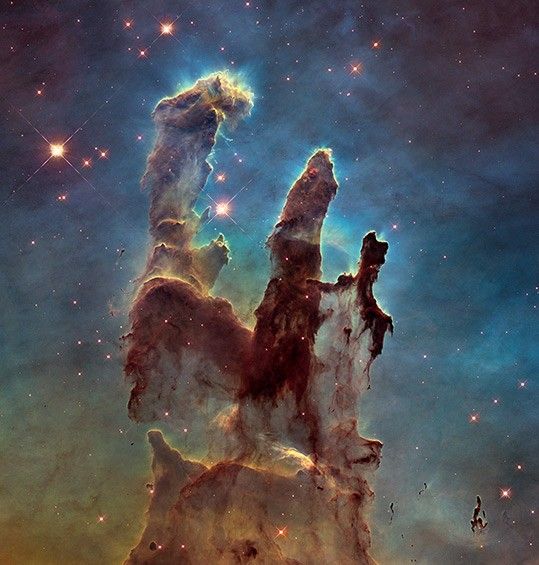Hubble Space Telescope's glamour shots of the universe are so revealing they nearly always have a discovery behind them.
In this image, a remote galaxy is greatly magnified and distorted by the effects of gravitationally warped space. After its public release, astronomers used the picture to measure the galaxy's distance of 9.4 billion light-years. This places the galaxy at the peak epoch of star formation in cosmic evolution.
In this particular snapshot, a science discovery followed the release of a Hubble observation of a striking example of a deep-space optical phenomenon dubbed an "Einstein ring." The photo was released in December 2020 as an example of one of the largest, nearly complete Einstein rings ever seen.
The extremely high rate of star formation in the brightest and very dusty early galaxies saw stars being born at a rate a thousand times faster than occurs within our own galaxy. This could help explain the rapid build-up of present day giant elliptical galaxies.
This object's unusual partial ring-like appearance can be explained by a phenomenon called gravitational lensing, which causes light shining from a faraway galaxy to be warped by the gravity of an object between its source and the observer. This effect was first theorized by Albert Einstein in 1912, and later worked into his theory of general relativity.
In this case, the galaxy's light has also been magnified by a factor of 20. This magnification, boosted by mother nature, effectively made Hubble's observing capability equivalent to that of a 48-meter-aperture (157 feet) telescope. The lensing effects also create multiple apparitions around the curved arc of the single background magnified galaxy.
NASA's Goddard Space Flight Center, Paul Morris: Lead Producer
In order to derive the physical properties of the galaxy, astronomers had to precisely model the effects of the lensing on the galaxy's image. "Such a model could only be obtained with the Hubble imaging," explained the lead investigator Anastasio Díaz-Sánchez of the Universidad Politécnica de Cartagena in Spain. "In particular, Hubble helped us to identify the four duplicated images and the stellar clumps of the lensed galaxy."
The initial Hubble observation was first conducted by Saurabh Jha of Rutgers, The State University of New Jersey. His team's science goal was to use Hubble's sharp image to reveal detailed complex structure in the ring arcs.
The object, GAL-CLUS-022058s, is located in the southern hemisphere constellation of Fornax (the Furnace). The image was nicknamed the "Molten Ring" by Jha, which alludes to its appearance and host constellation.
The Hubble Space Telescope is a project of international cooperation between NASA and ESA (European Space Agency). NASA's Goddard Space Flight Center in Greenbelt, Maryland, manages the telescope. The Space Telescope Science Institute (STScI) in Baltimore, Maryland, conducts Hubble science operations. STScI is operated for NASA by the Association of Universities for Research in Astronomy in Washington, D.C.
































